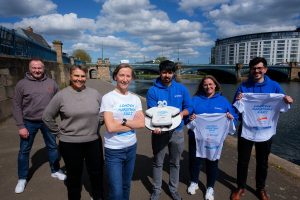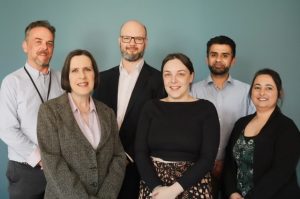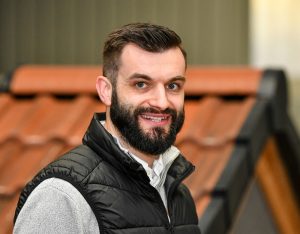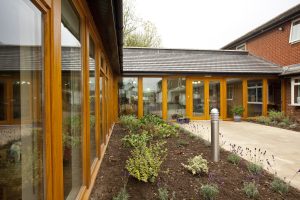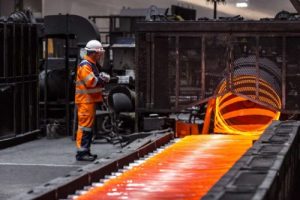How Covid-19 has boosted collaboration
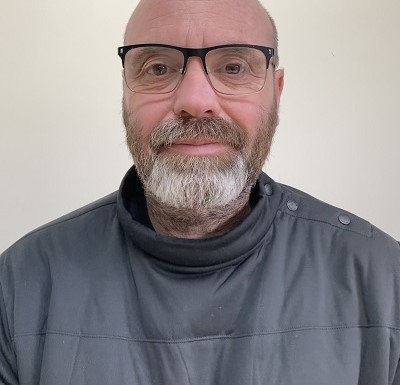
The pandemic has forced many businesses to embrace different ways of working, as they recognised the need to rise to the challenge or risk being left behind. For Alun Edwards, design director at leading web and mobile app developers AtomicMedia, there’s no looking back…
“The major change we have seen through the pandemic is how much closer collaboration we have needed to do because of our colleagues and clients working remotely.
We’ve had to put face-to-face meetings on hold but at the same time we have really taken advantage of the software available to us. Using the right tools has opened up so many opportunities to update and streamline our processes and also have our clients involved every step of the way.
By using software such as Figma and Miro we can have a number of designers working remotely on the same file at the same time – they can all be contributing to a project and you can see their cursors working and moving around. I could be training a junior colleague and be on the same screen working together at the same time. It really speeds things up.
It helps with keeping all our preparatory work and findings in one space, so if you need to bring somebody new in then you can just give them access to the board and they can sit there and immerse themselves in it, rather than having to look through lots of folders and files.
I have been in the business for many years and it seems strange now to think that in the past you would have designers sitting next to each other in an office and working individually on a file, explaining to the next person what needed to happen next. It could be very limiting.
It’s also been brilliant for collaborating with clients. I come from a background where collaboration was really drummed into you and it’s something that I really try to instill in young people coming through now – you can’t just have one or two people having all the knowledge.
Our clients actually work in our design files now. They are interacting with the design, leaving their comments on a virtual sticky note – they’re really engaged and they love it. Everything is done much more directly. It also helps to give them the ambition and appetite to try new things and experiment.
I think we’ve only just started to scratch the surface of all the capabilities of the tools that can help us. We need to look at even more efficiencies in our practices. And everybody has to learn how to use them properly – it’s like learning to play an instrument.
We are getting to grips with finding these solutions in a real-world situation working with clients, helping them with the problems that they face. Having the right tools will help to deliver real benefits to them as a business but more importantly to their users or customers – and there is so much potential to go further.
I’m a believer in embracing change and that is the industry we are in. We’ve gone from having an expertise in a traditional print brand to developing moving brands and designs that predominantly live on screen.
We are creating living brands rather than, say, just designing a logo that is stuck in a top corner. It is a really interesting time because you realise the potential is just phenomenal.
Once we are through this Covid situation, some things will settle back because people may not have learnt to adapt enough and they will revert back to what they know.
I’d like to think there are many people who have seen the opportunities that are there now.
Having said that, it would be great to have people back working in the same room at some point. I miss the simple conversations, the moments when you’re looking out of a window while talking to someone and having a good think.
We’ve all had to embrace video calls but the pattern of communications around them aren’t great at times. A silence in real life while you’re discussing an issue face-to-face with someone doesn’t feel as awkward as it can on a video call. People end up forcing something to fill in the time.
As a team, we’re all trying some simple techniques to improve these calls – pausing to think, sitting further back, lessening the rushed replies and avoiding looking at yourself when on calls.
We’ve had to learn to adapt. It’s a good time to be involved in this sector – it’s extremely relevant. We are designing real products that people have in their lives every day and you can have a real effect on how they operate. We really try to get under the skin of a project and build things that in the way they act can improve someone’s life.
We recently worked with a client to give their customers the tools they need to work in the field. So, for example, in the case of a construction worker, if a machine breaks down it’s important that they can get back up and running as soon as possible, to have the least effect on their revenue. We designed an app that lets them do that. Of course, the user benefits financially from that but they are also building a long-term relationship with our client.
Our industry is in a very interesting space now and it can only keep on evolving.
That’s why I think it’s vital to keep progressing with software that helps us work so collaboratively – but not forgetting being able to just stare out of the window when you need to think about something!”

